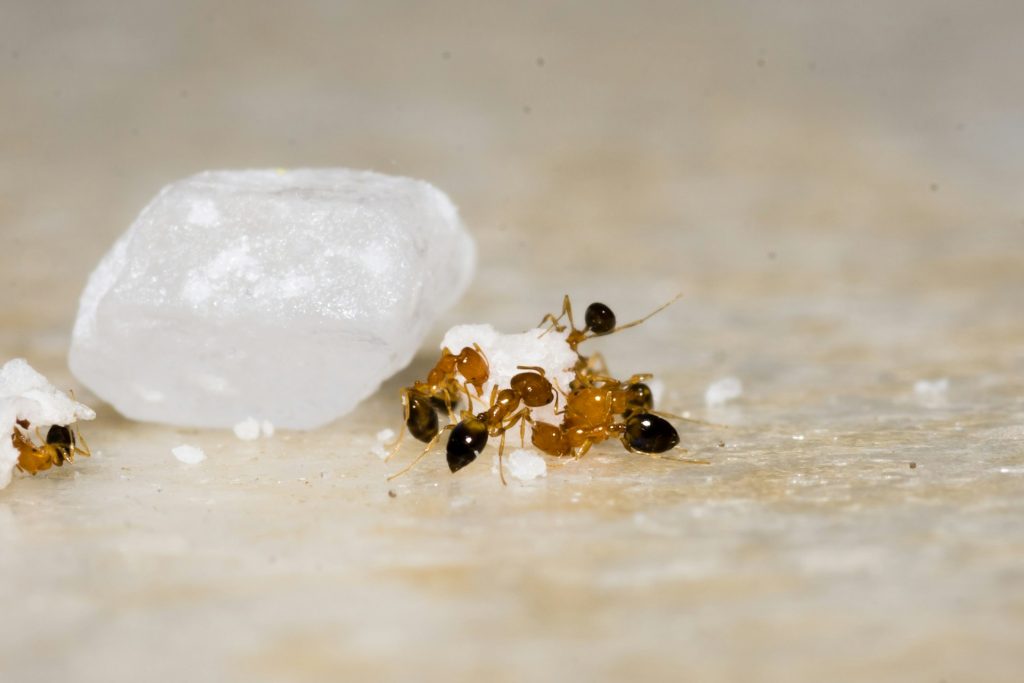Ants, the ubiquitous insects we often overlook, have not only survived but thrived on Earth since ancient times. Despite their small size, they wield enormous power, with an estimated total population of ten quadrillion individuals. Within this vast kingdom, spanning 15,000 known species, ants have built societies marked by intricate teamwork and selfless sacrifice. Delving into their world reveals a tapestry of division of labor, survival strategies, and unwavering devotion to the colony.

The Foundation: Division of Labor
Among Ants Imagine being an ant in this bustling kingdom. Every member plays a vital role, meticulously assigned based on age and capability. Queen ants reign supreme as the reproductive nucleus, while worker ants shoulder the myriad tasks essential for colony survival. From tending to eggs and larvae to foraging for food and defending against intruders, each ant contributes to the greater good. This division of labor, akin to a finely tuned machine, optimizes productivity and ensures resilience in the face of adversity.
The Leafcutter Ants: Masters of Agricultural Endeavors
Among the diverse cast of ant species, leafcutter ants stand out as pioneers of agriculture. These industrious insects cultivate fungus gardens within their colonies, a practice predating human farming by millions of years. Remarkably, leafcutter workers are stratified into distinct castes, each specialized for particular tasks. From cutting and transporting leaf fragments to guarding against predators, every ant fulfills its designated role with unwavering dedication. The collective effort of these tiny farmers results in colossal feats, such as excavating tunnels equivalent to building the Great Wall of China.
Sacrifice for the Greater Good: Honeypot Ants and Turtle
Ants In the annals of ant society, tales of sacrifice abound. Honeypot ants, found in arid regions, serve as living reservoirs, storing honey within their swollen abdomens to sustain their colony through lean times. Similarly, turtle ants fortify their nest entrances, risking their lives to repel invaders and safeguard their kin. Even in moments of peril, these ants exemplify unwavering commitment to the collective welfare, epitomizing the essence of altruism.

Worker Ants: The Unsung Heroes of Ant Society
At the heart of every ant colony lies the tireless dedication of worker ants. From nurturing their queen and siblings to foraging for food amidst perilous conditions, these selfless insects embody the essence of communal living. Their unwavering devotion transcends mere instinct, underscoring the profound bond that binds them to their colony. Amidst the trials of existence, worker ants stand as paragons of resilience and cooperation.
The Queen Ant: Architect of Ant Civilization
As the matriarch of the colony, the queen ant shoulders the weight of perpetuating her lineage. Her journey from princess to queen is fraught with peril, as she navigates the treacherous landscape of nuptial flight and nest establishment. Yet, her reign is not one of opulence but of sacrifice, as she dedicates her life to nurturing her progeny and ensuring the survival of her kingdom. In her, we find a testament to the enduring power of maternal devotion and selflessness.

Ants might be small, but they’re mighty when it comes to working together. They’ve got this whole teamwork thing down to an art, dividing up jobs and even giving up their own needs for the good of the colony. It’s pretty inspiring how these little bugs can teach us a thing or two about sticking together and getting stuff done. They’ve been building their mini-cities and living the communal life long before we started figuring out our own. In their persistence and unity, we see a mirror of what we can achieve when we work as one.





